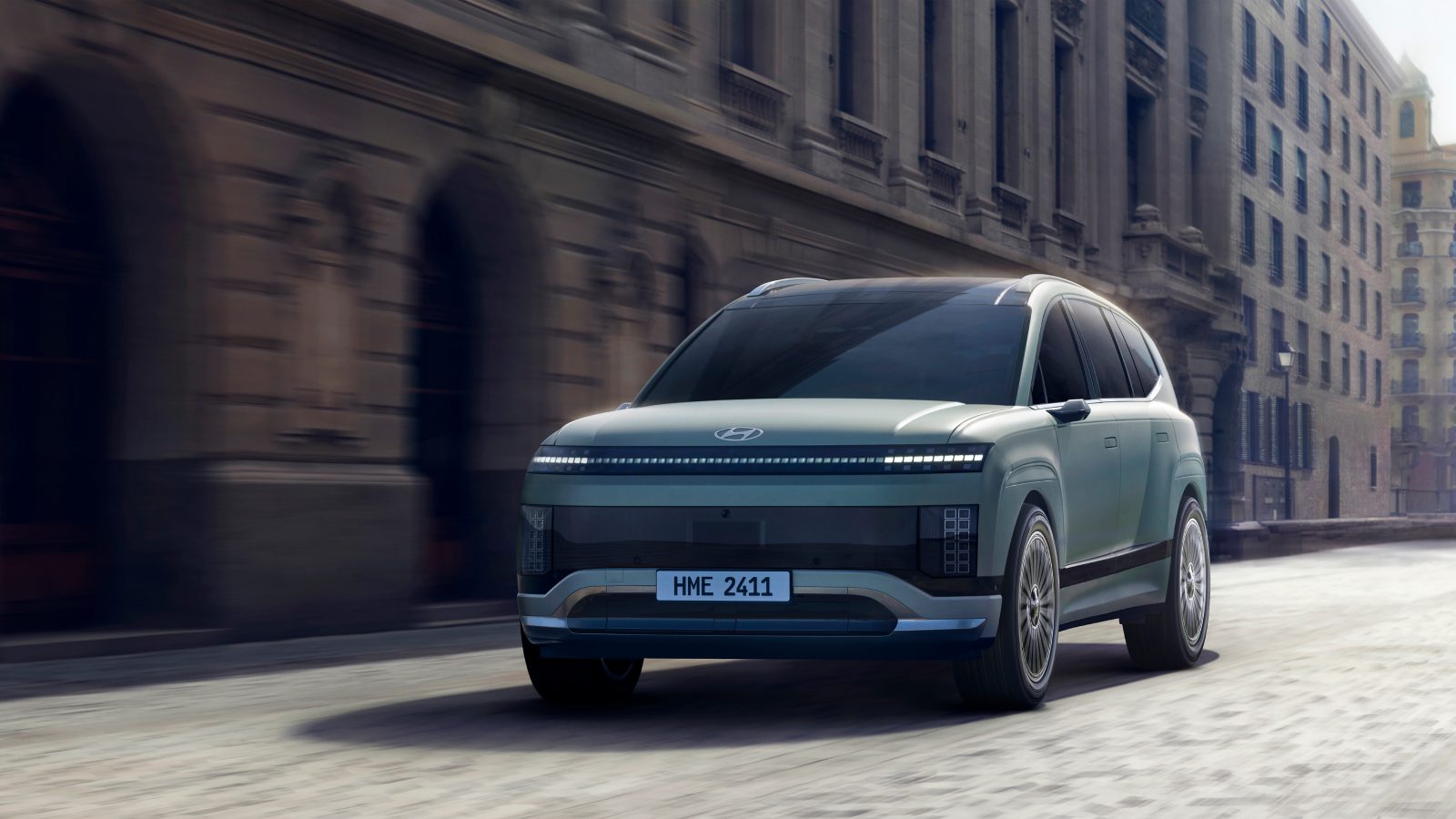
Hyundai has officially debuted its Ioniq 9 in advance of the LA Auto Show, with a concept car-like interior that lets you swivel the 2nd row seats and turn your car into a living room.
We’ve been hearing about the Ioniq 9 for some time now, and the time has finally come for its release.
In an event in advance of the LA Auto Show, starting this Friday and with a media preview day tomorrow (which Electrek will be in attendance for), Hyundai showed off the Ioniq 9 which will officially be unveiled at the Auto Show (you can watch via livestream) on the morning of Nov 21st.
The car is what we expected – a large, 3-row SUV, much like the EV9, the Ioniq 9’s cousin that is built on the same platform by Hyundai’s sister company, Kia.
But it also has some features we didn’t expect – like a little more clarity on that “lounge-like” interior we heard about, which turns out not to just be marketing fluff at all. It actually is like a lounge, complete with la-z-boy style footrests and swiveling seats so you can face your friends. More on that in a bit.
The Ioniq 9 comes with a perhaps excessively-large 110.3kWh battery (that extra 300Wh makes a big difference), offering up to 335 miles of range on the Long-Range RWD model with 19-inch wheels. 20- and 21-inch wheels are also available, we imagine with lower ranges.
The large battery will retain the E-GMP platform’s excellent DC charging performance, with the ability to charge from 10-80% in 24 minutes, assuming you’re connected to a capable charger (Hyundai says 350kW “under optimal conditions”).
The Long-Range model will have a 160kW (215hp) rear motor, and an additional 70kW (94hp) front motor if you get the AWD model. Performance AWD will be available with 160kW motors on both axles.
The long range RWD model will do 0-100km/h (0-62mph) in 9.4 seconds, AWD in 6.7 seconds, and Performance AWD in 5.2 seconds (or, if you prefer 0-60, the Performance model can do it in 4.9).
The vehicle is large, as you’d expect out of a 3-row SUV, at 5,060mm (199.2in) long, 1,980mm (78in) wide and 1,790mm (70.5in) high. This is 2 inches longer than its sister car the EV9, and 1 inch less long than the Rivian R1S.
Exterior design keeps some of the design language of the (excellent) Ioniq 5, but larger and more rounded-off. In particular, it keeps some of the dot-matrix/pixel aesthetic of the lights.
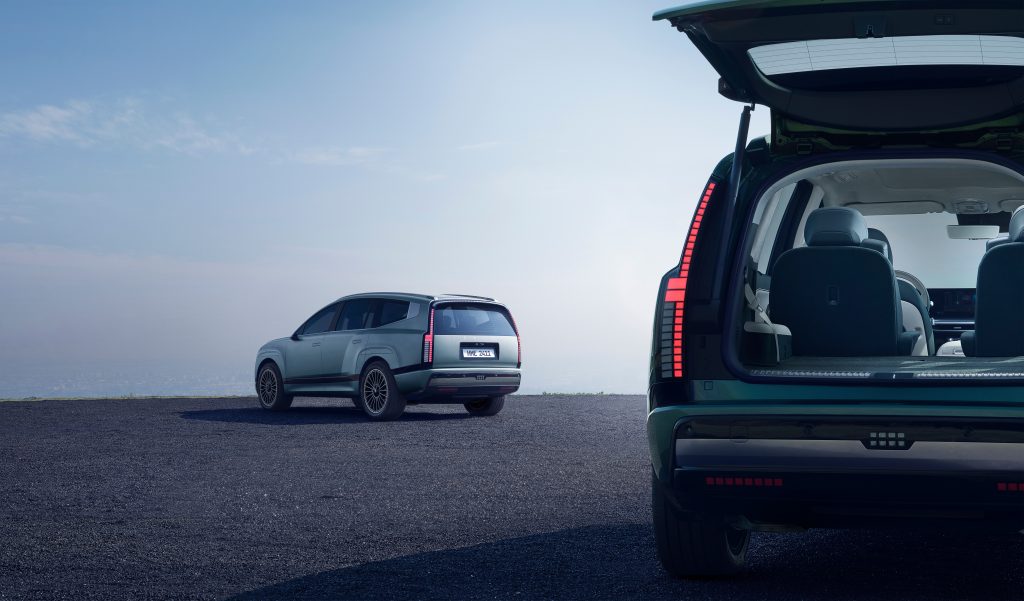
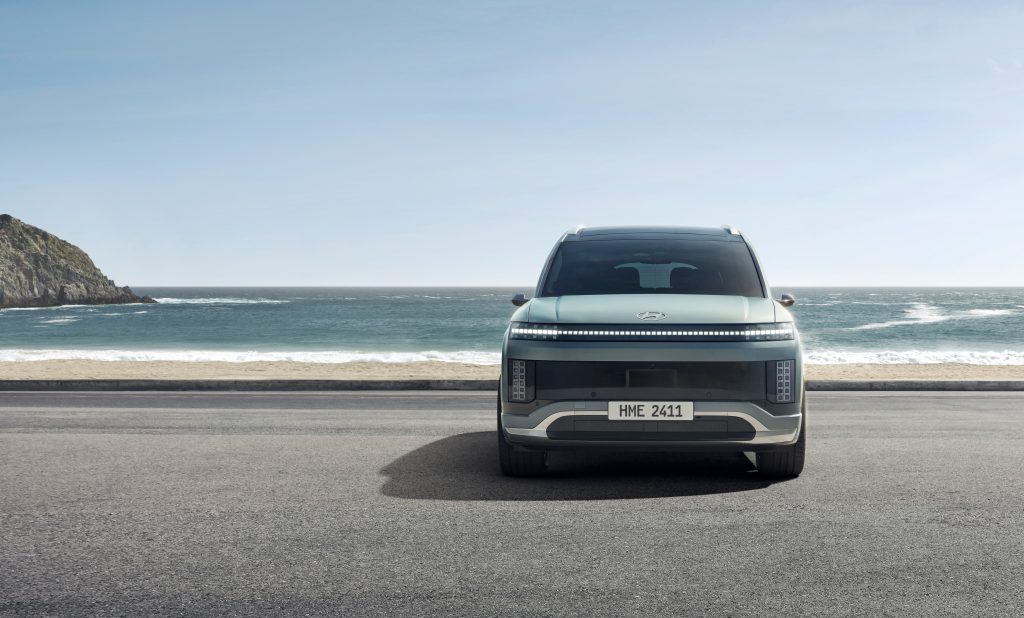
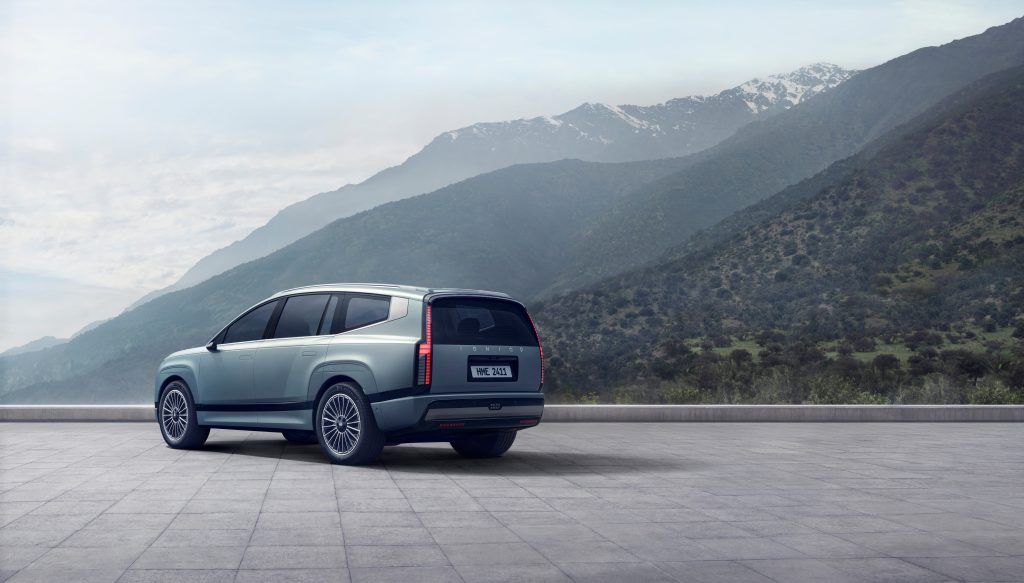
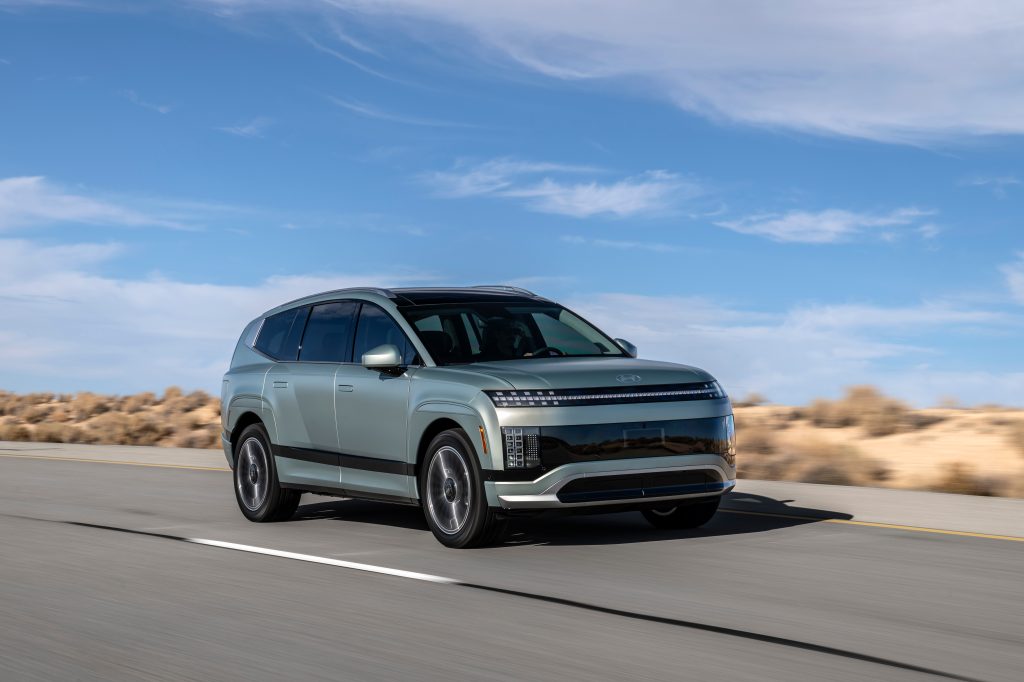
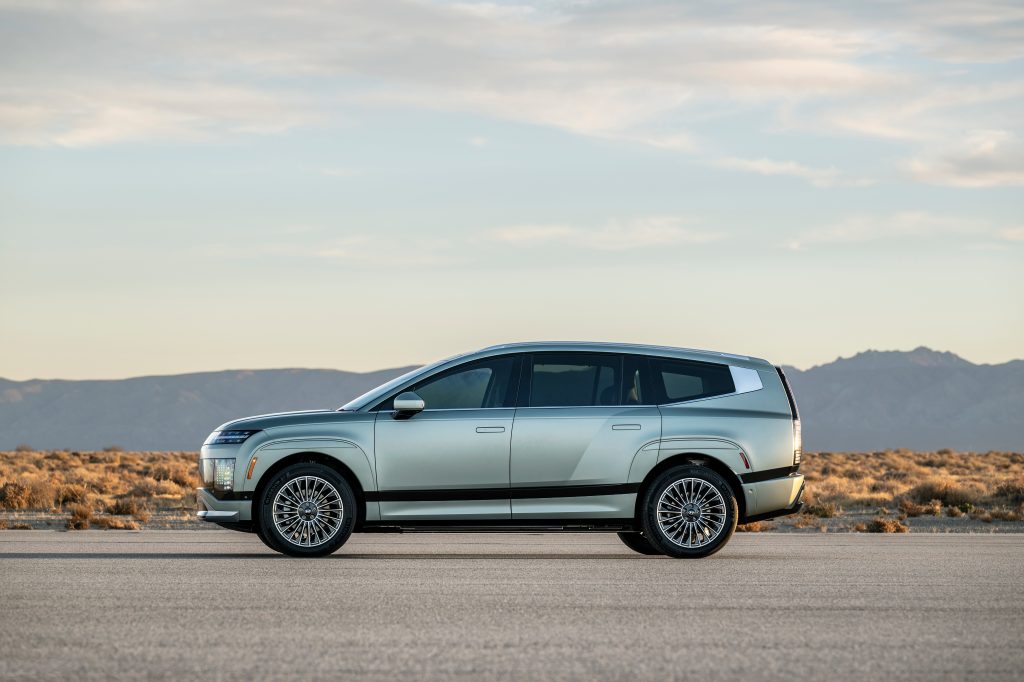
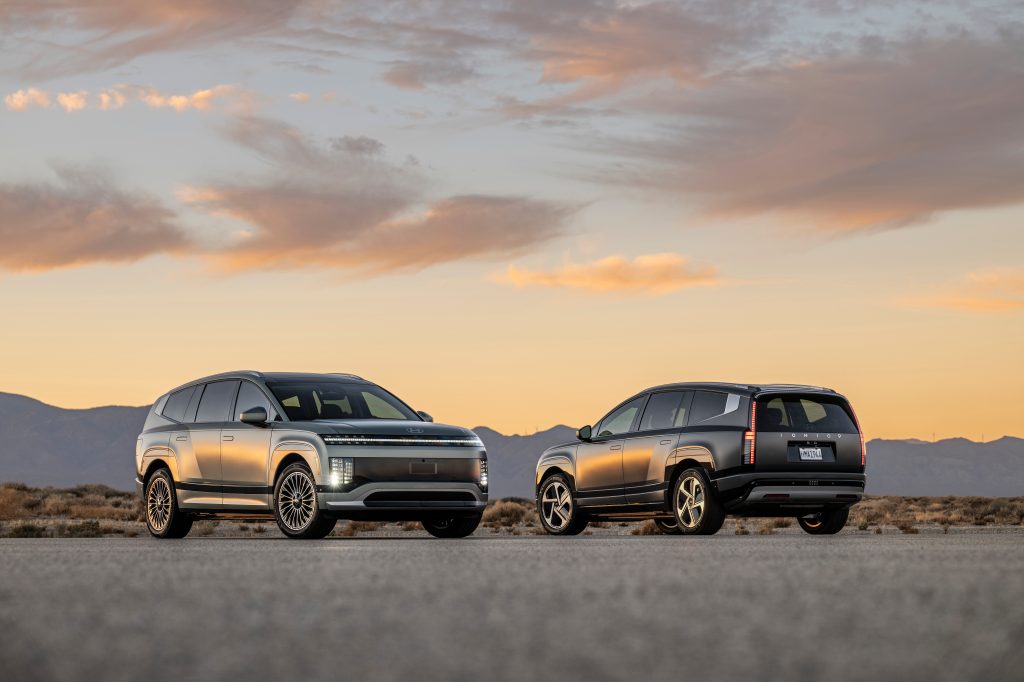
I have to say I don’t love the roundedness of it – the design of the Ioniq 5 feels extremely consistent with a lot of straight lines throughout, whereas the rounded hood and extended rear end of the 9 spoil that consistency to some extent (and speaking of the rear… it almost seems a little hearse-like, to me).
Incidentally, with the Ioniq 5 and EV6, one is more boxy and the other is more rounded – and the same thing has happened with the Ioniq 9 and EV9, only in reverse. The Ioniq 9 is more rounded and the EV9 is more boxy. So, once again, these two similar vehicles have differentiated themselves enough that we expect the market will be split, with many customers liking one and disliking the other, meaning little cannibalization between the two.
The interior seems incredibly spacious, though so far we haven’t had a chance to experience it ourselves. Most 3-row SUVs in this size class do have somewhat cramped third rows, so we’re curious if Hyundai has managed to do some sort of magic in that respect.
And in addition to rear and frunk storage (with a frunk capable of holding 88L in RWD and 52L in AWD models), the center console offers a large amount of storage inside (18.2L, split between an upper and lower tray), and can be slid back and forth to allow easier movement between front or rear seats.
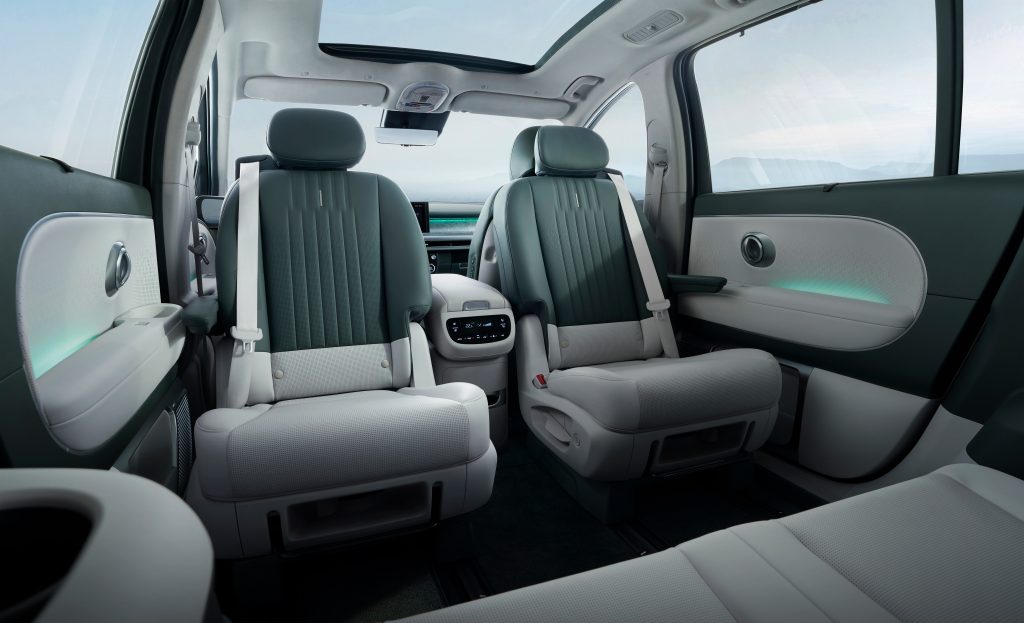
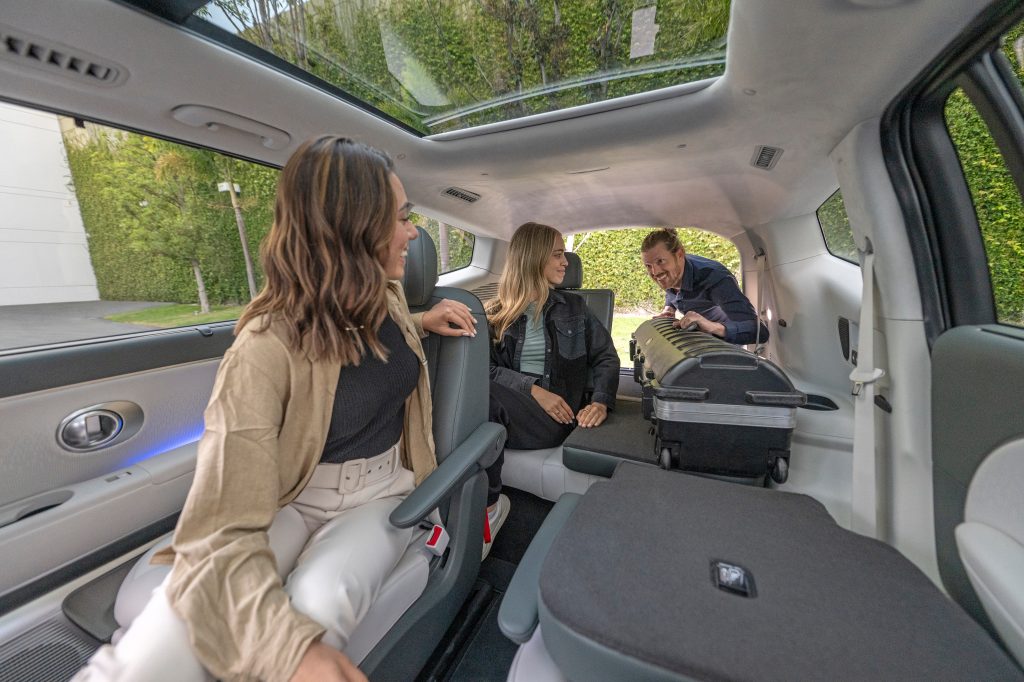

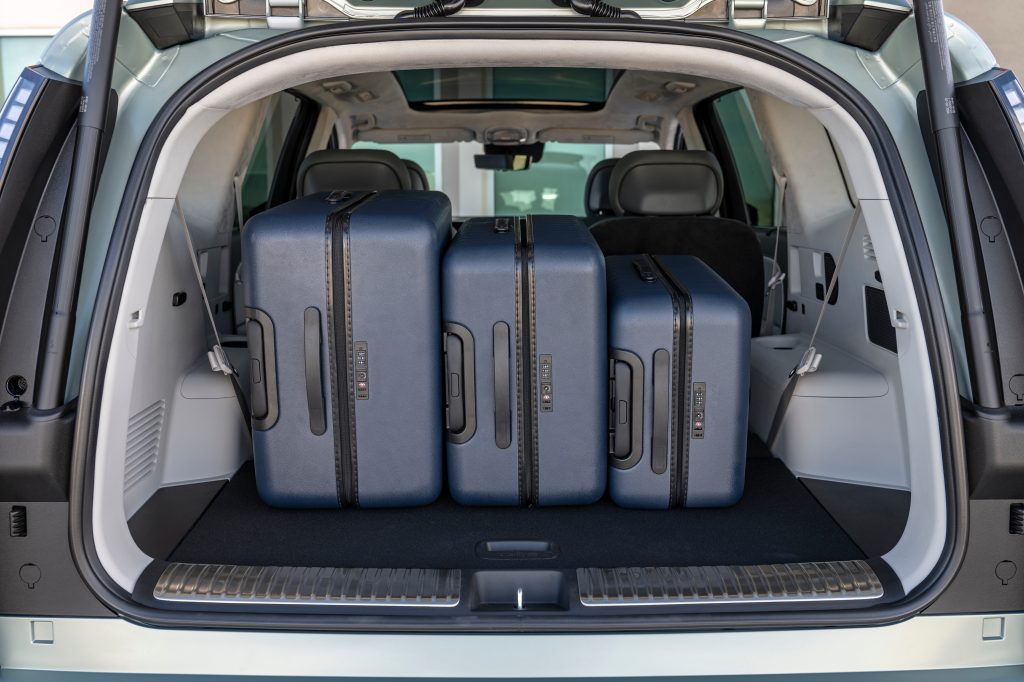
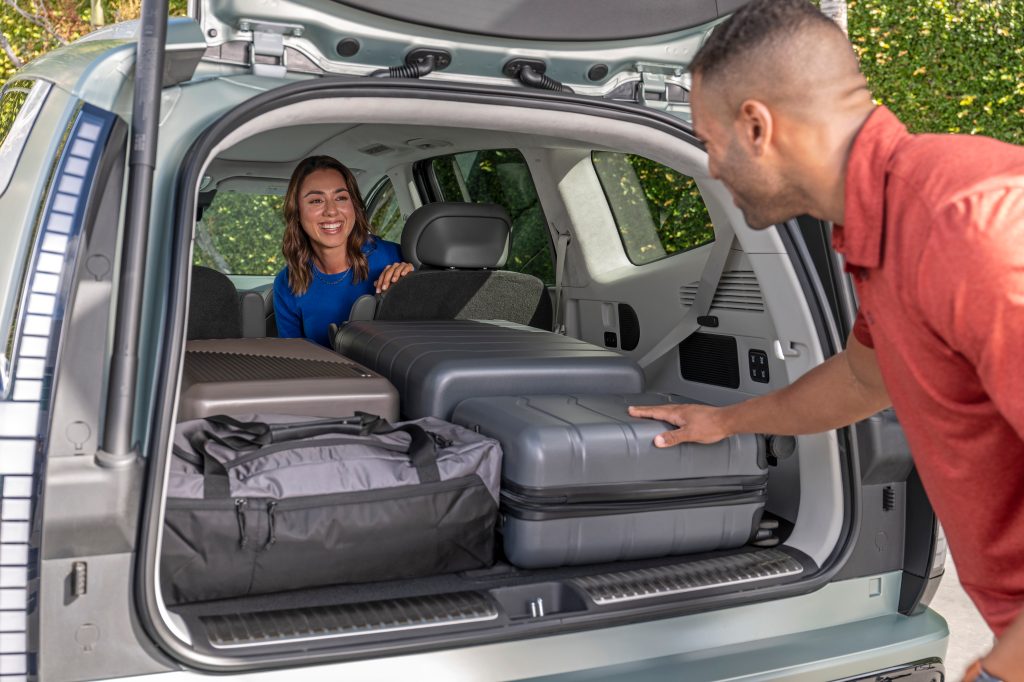

And speaking of magic, Hyundai has actually done something new here – an interior with swiveling middle seats, to turn the car into a lounge.
We’ve seen similar interiors on countless concept cars, but understandably they never make it to production. It’s definitely an attention-grabbing feature, but who really uses their vehicles like that?
Well, Hyundai thinks that people will, so it’s offered swiveling 2nd-row seats to allow for this. However, it says that these seats will be available “in selected markets only,” and it has declined to say exactly which markets those are yet. We also imagine this will only apply to the 6-seat configuration, rather than 7-seat.
The seats don’t just swivel though, they also recline and have a leg rest. Hyundai is calling these its “Relaxation Seats,” and the first and second row seats will both be capable of this feat. It says this will be particularly useful for people who want to get comfortable during vehicle charging (though, on an optimal 350kW charger, 24 minutes is hardly much time for a nap).
And that charging will be accomplished via a NACS port – making this, we think, the first non-Tesla vehicle to debut and be sold with only a NACS port at any time in the model’s existence. Other E-GMP vehicles are switching over to NACS, but the Ioniq 5 for example has been out for many years now, so there are lots of CCS Ioniq 5s out there, but that won’t be the case for the Ioniq 9.

Like other E-GMP vehicles, it will be able to discharge the battery via vehicle-to-load (V2L) to power devices, though we didn’t get clarity on how much total output it will have. Other E-GMP cars usually top out around 1.8kW, so enough to run some regular outlets, but not enough to power a house.
The Hyundai Ioniq 9 will be available in Korea and the US in the first half of 2025, and then will come to Europe and other markets later. The US version will be built at Hyundai’s plant in Georgia – another example of a car brought to the US by the domestic sourcing provisions of President Biden’s EV push (and which could be put into Jeopardy if Dumb & Dumber get their way in attempting to kill this boon for US manufacturing).
We don’t have pricing or all tech specs yet, so stay tuned as there’s still more to come.
Also, you can watch the official debut livestream over at Hyundai’s website, starting at 9:10am PST November 21st. And Electrek will be at the LA Auto Show to ask around and see if we can get any lingering questions answered.
Charge your electric vehicle at home using rooftop solar panels. Find a reliable and competitively priced solar installer near you on EnergySage, for free. They have pre-vetted installers competing for your business, ensuring high-quality solutions and 20-30% savings. It’s free, with no sales calls until you choose an installer. Compare personalized solar quotes online and receive guidance from unbiased Energy Advisers. Get started here. – ad*
FTC: We use income earning auto affiliate links. More.






![Daimler CEO just dropped some pretty WILD pro-hydrogen claims [update]](https://i0.wp.com/electrek.co/wp-content/uploads/sites/3/2025/09/hydrogen_semi.jpg?resize=1200,628&quality=82&strip=all&ssl=1)






